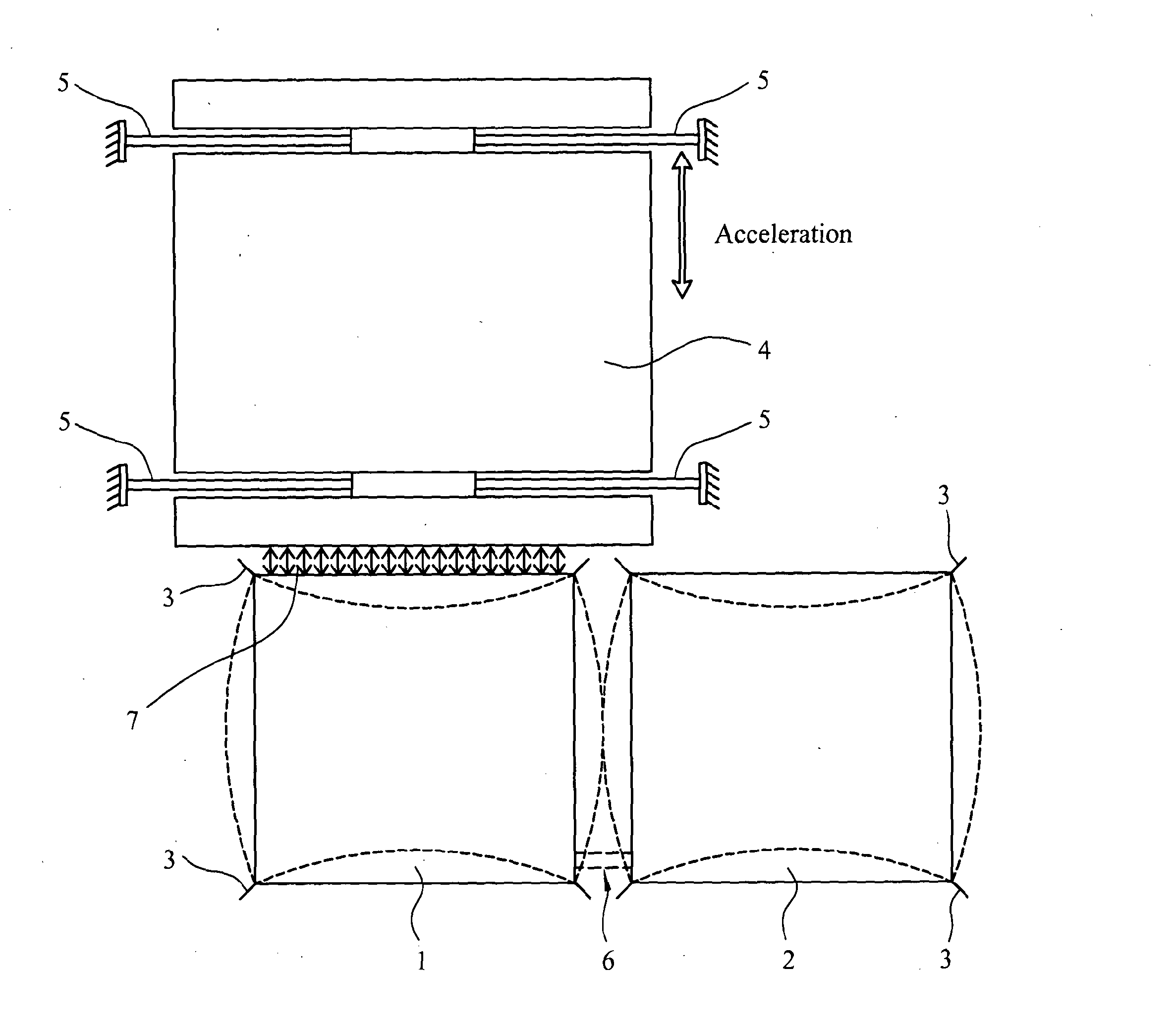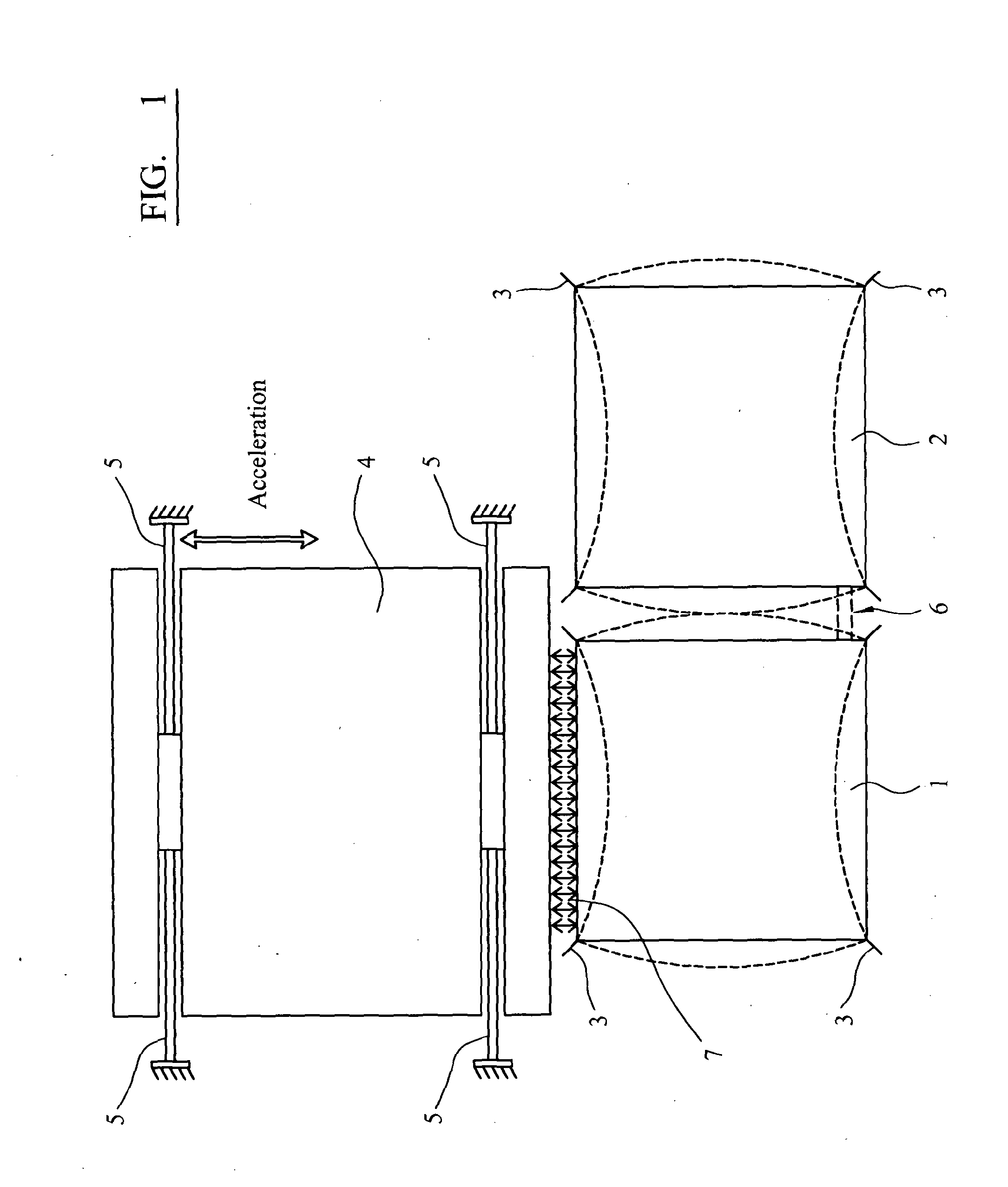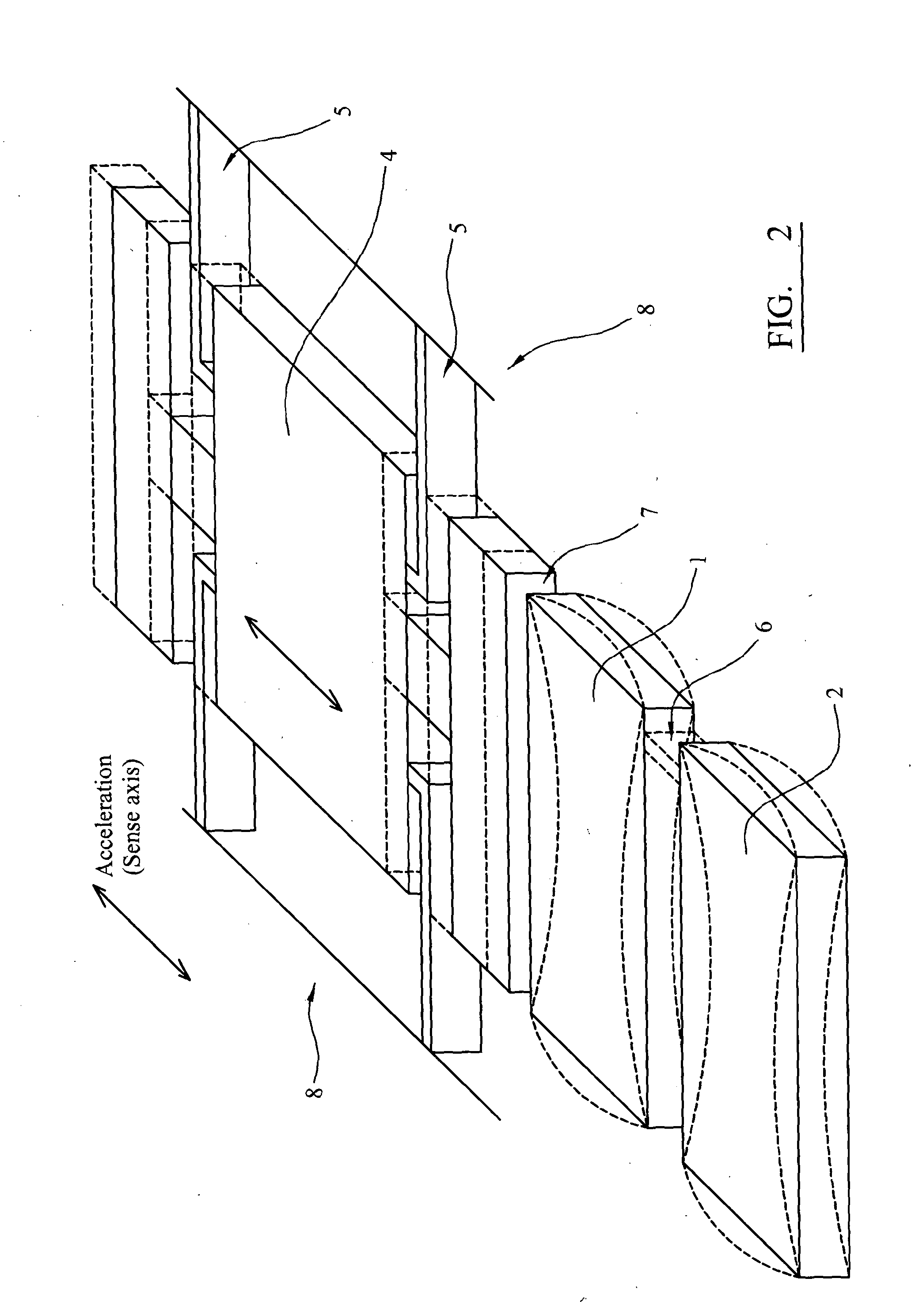MEMS Inertial Sensor and Method of Inertial Sensing
a technology of inertial sensing and sensing device, which is applied in the direction of acceleration measurement using interia force, devices using electric/magnetic means, instruments, etc., can solve the problems of increasing manufacturing cost, and achieve the effects of increasing sensitivity, high quality, and increasing parametric sensitivity
- Summary
- Abstract
- Description
- Claims
- Application Information
AI Technical Summary
Benefits of technology
Problems solved by technology
Method used
Image
Examples
Embodiment Construction
[0069]FIG. 1 illustrates a sensor in accordance with a first embodiment of the invention. The sensor comprises two resonant elements 1, 2, which in this example are bulk acoustic wave (BAW) resonators. The two resonant elements 1, 2 are adjacent to one another and fixed to a substrate or frame by flexures 3. The first resonant element 1 is capacitively coupled to a proof mass 4, which is suspended from the frame by flexures 5. The two resonant elements are weakly coupled by a mechanical coupling element 6.
[0070]Mode localization in a device of this type may be illustrated by considering the simple case of two weakly coupled resonant elements with masses m1 and m2 and stiffnesses k1 and k2. One of the resonant elements is coupled to a proof mass by a capacitive air gap. When the two resonant elements are perfectly identical (m1=m2=m; k1=k2=k) the system is symmetric about the coupling, which has a stiffness kc. When the device experiences an acceleration, the proof mass displaces by ...
PUM
 Login to View More
Login to View More Abstract
Description
Claims
Application Information
 Login to View More
Login to View More - R&D
- Intellectual Property
- Life Sciences
- Materials
- Tech Scout
- Unparalleled Data Quality
- Higher Quality Content
- 60% Fewer Hallucinations
Browse by: Latest US Patents, China's latest patents, Technical Efficacy Thesaurus, Application Domain, Technology Topic, Popular Technical Reports.
© 2025 PatSnap. All rights reserved.Legal|Privacy policy|Modern Slavery Act Transparency Statement|Sitemap|About US| Contact US: help@patsnap.com



